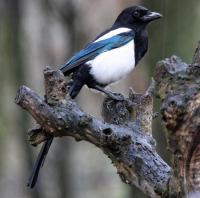- Home
- FAQs
- Customer Video Gallery
- Customer Photo Gallery
- Bird Facts
- Bird Food Blog
- Bird Information
- Feeding Advice
- Small Animal Information
- A to Z of Guinea Pigs
- A to Z of Hamsters
- A to Z of Rabbits
- Basic Care for Guinea Pigs
- Basic Care for Hamsters
- Basic Care for Rabbits
- Basic care for Chinchillas
- Basic care for Ferrets
- Basic care for Gerbils
- Basic care for Mice
- Basic care for Rats
- Buying a Healthy Small Animal
- Does your Reptile need a Licence
- Equipment for Ferrets
- Equipment for Hamsters
- Equipment for Mice
- Equipment for your Chinchilla
- Equipment for your Gerbil
- Equipment for your Guinea Pig
- Equipment for your Rabbit
- Keeping a House Rabbit
- Dog Information
- Cat Information
- Customer Information
- Fat Balls
- Suet Pellets
- Straights
- Seed Mixes
- Suet Treats
- Mealworms
- Bird Feeders
- My Account
Sparrowhawk
Date: 2017-03-17 10:21:42 | Category: Bird Watching | Author: David Cole
It’s been a year of mixed fortunes for the Sparrowhawk, with the highest recorded average counts in gardens last January, followed by the lowest-ever numbers for December, as reported by British Trust for Ornithology’s (BTO) Garden BirdWatch survey.The British Trust for Ornithology is highlighting the ups and downs of one of our ‘love‘em or hate’em’ birds of prey – anyone who has witnessed the cloudburst of tiny feathers as a Sparrowhawk takes a tiny victim from their bird table will have suffered this dilemma. Below comes from the Trusts latest newsletter….
Sparrowhawks are most frequently seen in gardens during the autumn and winter months, a time when numbers are swelled with juveniles and when the smaller birds they prey on are flocking into gardens to feed. January 2016 saw the highest average counts of Sparrowhawk for the time of year but since summer 2016 numbers have been abnormally low, according to Garden BirdWatch. They were only seen in 8% of gardens in December, well below average and a 5% reduction on December 2015.
We suspect that this decline is linked to the wet weather in June. This resulted in a poor breeding season for many smaller birds, on which Sparrowhawks will feed, such as Blue Tits and Great Tits. With fewer young birds around there would have been less available food to feed their own chicks, potentially leading to lower survival in young Sparrowhawks. They may also have been directly affected by the wet weather.
Sparrowhawk are not always popular garden visitors, as they feed on other garden birds. Their population crashed in the 1950s and 1960s due to pesticide poisoning, but numbers have since recovered, and they are the bird of prey most commonly seen in gardens.
We do not yet know whether this sudden Sparrowhawk decline will be a continuing trend. You can help us find out by joining the BTO Garden BirdWatch survey and giving a small amount of time each week to monitor your garden wildlife.
Claire Boothby, Garden BirdWatch Development Officer at the British Trust for Ornithology said, “The surprise appearance of a Sparrowhawk is always a dramatic garden event and one that has been witnessed by fewer people than usual this winter. Sparrowhawks rely on the availability of prey, in their case particularly birds, to survive. We know that numbers of Great Tits and Blue Tits are down in gardens this year, following a poor breeding season and this may have had an effect on the number of Sparrowhawks seen in gardens.”




.jpg)
